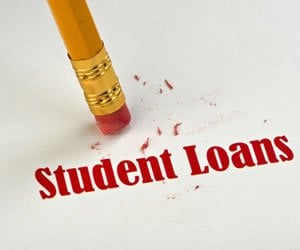Many medical students cheerfully expect to be earning a generous income as they begin their medical practice. But while it is true that that, according to the Medical Economics website that in 2014, 7 of the 10 top-paying jobs were in the medical profession, the issue of course is far more complicated than that. The American Association of Medical Colleges estimates that a four-year medical education at a private school today will cost around $278,455 dollars while a public one runs only slightly below that at $208,868. And the average medical student will be around $180,000 in debt at the time of their graduation. Around 20% will have debt in excess of $250,000.
These numbers can seem staggering. Fortunately, there are programs available to medical students which not only get them out from this monumental debt, but help underserved communities across the country and improve access to quality medical care for some very vulnerable patient populations.
Recent Game-Changers
One advantage that graduating medical students have today is that loan repayment and forgiveness programs are more flexible and user-friendly than they have been in the past. This change began in 2009, when legislation passed to alter student loan repayment. New programs, such as the Income-Based Repayment (IBR) plan, the Pay as You Earn plan and the Public Service Loan Forgiveness have given students of all kinds–including medical students–ways to cancel out the sometimes enormous debts under which they are forced to begin their professional lives.
The Public Service Loan Forgiveness (PSLF) may be of particular interest to doctors just starting their profession. This federal program makes it possible for loans to be forgiven after 10 years (or 120 payments) made while a doctor is working for a nonprofit or other qualifying organization, often practicing in underserved communities across the country. Oftentimes, individual states–particularly those where there is a greater shortage of physicians or a greater need for such medical professionals–will also have loan forgiveness programs for new medical students willing to work in underserved areas.
Two other programs of note are the National Health Service Corps (NHSC) and the Student to Service Program (SSP). The NHSC program offers loan forgiveness for doctors willing to give primary care in what are designated to be Health Professions Shortage Areas (HPSAs) while the SSP program will grant up to $120,000 towards med school debt for doctors to work as PCP’s for 3 years in designated HPSAs. These are two of the most popular programs of their kinds.
The American Association of Medical Colleges has a link to many available programs. The site does not claim to be all-inclusive, but does offer information on many such opportunities that are available.
The Other Side of the Coin
For many students, signing up for one of these programs is not just about the money, although admittedly, the loan forgiveness can come as a huge financial relief. Meredith Henson Talley, who is the Student Services Director for the University of Oklahoma’s School of Community Medicine, notes that for many new doctors, there are altruistic and humanitarian motives involved as well: these programs appeal to students who have gone into medicine with a genuine interest in helping others. In these HPSAs, the need for good medical professionals is acute. She notes that these programs also give doctors a broader understanding of the problems and flaws inherent in the healthcare system, which can, in turn, give them the knowledge and experience they need to try to find solutions to these problems. It also gives doctors a deeper understanding of how a patient’s environmental conditions can affect patient’s ability to maintain a healthy lifestyle.
Are These Programs a Good Fit?
Loan forgiveness is music to many medical students’ ears–and with good cause! However, it is also good to look very hard before leaping into one of these programs. It is recommended that, before signing up for anything, that graduating doctors scrutinize any contracts and ask for clarification about any details that they are unsure of. In other words, to know exactly what they are getting into before they sign.
Also, as many of these programs take place in rural, isolated or impoverished areas, it is strongly advised that doctors try to get some experience working in such places before signing onto a program to get a feel for it, and also to determine if this is the kind of practice that they would like to be in. Some doctors will fall in love with this kind of rural practice. Others certainly will not.
On the whole, according to the website Med School Pulse, physicians will feel most comfortable in one of these programs if they:
● Are able to work well as a team with other doctors, nurses and healthcare professionals.
● Are interested not only in treating individual patients but looking at the larger issues and challenges of the healthcare system with an eye towards improving it.
● Are able to think creatively and “outside the box” to come up with solutions to healthcare challenges.
In other words, successful completion of this kind of program is more likely if a physician is psychologically suited to this kind of community-based practice.
These programs will not appeal to everyone. However, for doctors who are interested in working with vulnerable populations or in underserved areas of the country, these programs offer a way to get out from the heavy burden of student debt when beginning their medical careers.
References
Loan Repayment and Scholarship Programs. American Association of Medical Colleges. 2015.
http://services.aamc.org/fed_loan_pub/index.cfm
Molldrem, C. Medical Student Loan Forgiveness: Programs Exist to Wipe Away Debts.
http://medicaleconomics.modernmedicine.com/medical-economics/content/tags/debt/medical-student-loan-forgiveness-programs-exist-wipe-away-debt
Schwartz, M. Top Loan Forgiveness Programs for Students Facing Medical School Debt.
Med School Pulse. 2015
http://www.kaptest.com/blog/med-school-pulse/2014/09/03/top-loan-forgiveness-programs-students-facing-medical-school-debt/
Student Loan Forgiveness for Medical Students
